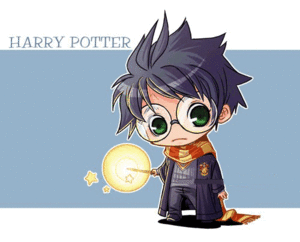Times Magazine 評論文章
2020/03/07 今期時代雜誌Times Magazine 評論文章, 標題為
The corona virus has brought out the ugly side of the Hong Kong protest movement
At the very edge of Hong Kong, where suburban foothills flow into a river border with China, a lone sentry scares the traffic away. The checkpoint, its gestures and the line of spinning vehicles indicate is closed.
Behind him sits the glass and concrete skyline of Shenzhen – the closest Chinese city to Hong Kong. Without the usual crowd of travelers, buses, and street vendors here at Lo Wu station, the only noise comes from water buffalos grunting across the tracks.
This and nine other border crossings were recently closed to curb the outbreak of the deadly coronavirus COVID-19, which occurred in the central Chinese metropolis of Wuhan, devastated the mainland and spread far beyond.
In Hong Kong, the symbolically charged mainland border has become another source of militant unrest after months of anti-government protests. The residents of this semi-autonomous enclave, which the British returned to China in 1997, insist that the whole thing must be sealed. A suspected bombing campaign appeared to be an attempt to force the government to do just that. No one was injured, but the flood of homemade explosives planted in a hospital, public toilet, and Lo Wu station had “come a big step closer to terrorism,” police said earlier this month.
Aside from the impending health crisis, this recent struggle for control of people, pathogens, and ideas crossing the border reflects the same deep distrust of the Chinese Communist Party that exploded during the recent protests. It also reveals a dirty secret that many demonstrators and their supporters are trying to downplay: how easily antipathy towards the party translates into resentment against ordinary mainland Chinese.
Beijing’s increasing assertiveness in recent years has fueled outrage at perceived interventions. It has also helped to catalyze a unique identity in Hong Kong – one based on defending the territory’s unique freedoms against the influx of money, people and power to the mainland. “Hong Kong is not China” has become a collective call across the city, sprayed on walls and sung during protests. Anger extends to everything identified with China: emblems, companies, and even people.
Mainlanders, long suspected of being involved in demographic, socio-economic and even political occupation, are now feared as carriers of disease, which encourages a bigotry that is increasingly violent.
“As the epidemic continues to worsen, people in the back of their minds will blame the mainlanders and think,” After all, it is the mainlanders who started it all, “said Willy Lam, an expert on Chinese politics at the Chinese University of Hong Kong.
>>> Relived a nightmare >>>
In Asia’s financial center, where more than 60 cases have been registered compared to 75,000 on the mainland, fears are aggravated by memories of another nightmare. Severe Acute Respiratory Syndrome (SARS) traumatized the city in 2003, killing 299 people. Then Hong Kong was in the middle of the outbreak. The epicenter is now about 600 miles away.
However, the cosmopolitan center of 7.5 million resembles a city at a standstill. Restaurants, shopping centers and public transportation are largely deserted, as people work from home and schools are closed. Medical masks are so scarce that there are hundreds of forms next to pharmacies that are said to have supplies. Runs on toilet paper, bleach, and rice have bared the grocery shelves.
After months of bitter protests, the lack of trust in the government is profound. Panic “spreads faster than the virus because the government is not acting efficiently,” says Dr. Ho Pak Leung, microbiologist and director of the Center for Infections at the University of Hong Kong.
Union members, democracy activists and even politicians working for the establishment have come together to call for the border to be closed. Doctors on strike have threatened to stop en masse. Hong Kong’s contested leader, Chief Executive Carrie Lam, refused to seal the border as impractical and discriminatory, but eventually agreed to close all but three checkpoints and to impose a mandatory 14-day quarantine on all people arriving from the mainland. The measures are unprecedented, but not enough for the many who fear that the contagion will overtake Hong Kong and mainland patients will consume their medical reserves.
“We need to protect our own people first,” said Ng, a patient care assistant who joined the recent strike. “If our medical system fails, there will be nobody to help Hong Kong people.”
Since the border is still partially open, some have set themselves the task of enforcing their own restrictions. Several restaurants refuse to speak Mandarin (the official language of the mainland, unlike Hong Kong, where Cantonese dominates). Some hotels require health certificates from mainland guests, and a student from Hubei told local media that mainlanders quarantined at a university were doxxed.
However, experts have warned that draconian travel bans adopted by large parts of the world may only distract vital resources from public health tasks and spark sinophobia.
“At this point in the outbreak, I see no reason for public health to justify sealing borders,” said Tara Kirk Sell, a senior scientist at the Johns Hopkins Center for Health Security.
Medical workers wearing protective masks gather on February 4, 2020 during a protest outside the Hong Kong hospital authority headquarters in China's Paul Yeung / Bloomberg via Getty ImagesMedical workers wearing protective masks gather on February 4, 2020 during a protest outside the Hong Kong hospital authority headquarters in China's Paul Yeung / Bloomberg via Getty Images
>>> A crowded border >>>
Beyond the public health debate, the urge to seal the border is bursting with political subtext.
With its river banks, barbed wire fences, passport controls and a compact no man’s land, Hong Kong differs from the rest of China after 25 kilometers and describes it as a place where the laws of the mainland do not apply.
As a colonial relic, the border follows the same line as the British. Their efforts in the 1970s and 1980s to strengthen the border and maintain a stable population – after the influx of refugees in the past decades – have changed the territory. The anthropologist Ip Iam-chong, once a temporary refuge for people fleeing starvation and political instability, has become a solid base with a certain local identity. He writes in “Politics of Belonging: A Study on the Campaign Against Mainland Visitors in Hong Kong”.
After Hong Kong returned to China in 1997, the border served as a “firewall” to protect the city’s autonomy, says Jeffrey Twu, who studies border and nationalist movements at Columbia University.
“This call to close the border is not so much about asking the government to literally close all of the immigration booths. It is really an urgent call to the government to rethink its relationship with the central government in Beijing, ”he says.
But the increasing permeability of the border in recent years has heightened fears among local activists that Hong Kong, with the British, will be just another Chinese city. After Beijing eased travel restrictions in 2003, mainland visitors became an economic lifeline for the SARS economy in Hong Kong and filled hotel rooms, restaurants, shopping centers and boutiques. As the number of visitors rose from 7 million in 2002 to 51 million in 2018 – almost seven times the urban population – resentment grew.
The economy was increasingly responding to the needs of Chinese day trippers, who were accused of everything from congestion on the streets to permission for their children to settle in public. “Many of them are very rude,” said Isaac Au, a 30-year-old Hong Kong resident, about mainland residents in a fairly widespread mood. “When they’re rich, they think they can only spend money and they are the kings of the world.”
The birth tourism, the competition for study places and the increasing use of Mandarin also irritated the locals. The noticeable consumption of mainland shoppers – the city is estimated to account for up to 10% of global luxury goods sales of $ 285 billion – has exacerbated the feeling that many Hong Kongers are being priced out of their own city. This also applies to the inflow of mainland money into the local real estate market, which is already one of the most expensive in the world.
Beijing has tried to promote territorial integration through massive infrastructure projects. A high-speed line connecting Hong Kong directly to 58 mainland cities and reaching the Chinese capital Beijing within nine hours was opened in 2018. Likewise, an 18.8 billion dollar bridge connecting Hong Kong with the former Portuguese colony of Macau and the mainland, the Chinese city of Zhuhai.
An attempt was also made to promote cultural assimilation, such as a 2012 campaign to introduce “patriotic education” in schools in Hong Kong. But this initiative led to bitter protests, and China’s growing closeness left Hong Kong cold. Hong Kong’s feeling of being Chinese reached an all-time low in 2019, according to an annual survey by Hong Kong University’s Public Opinion Program. Of 18 to 29 year olds, 75 percent said they were more “Hong Kong” than Chinese, while 49 percent of 30 year olds or older felt the same way.
>>> Escalating violence >>>
This smoldering fear has regularly led to xenophobia. In 2012, a local newspaper advertisement portrayed the Chinese mainland as grasshoppers that freed the city from its resources, and “grasshoppers” have since been a derogatory name for mainland residents. Nativist groups emerged and promised to defend their homeland. One, Hong Kong Indigenous, hosted “Reclaim” campaigns in 2015 aimed at mainland buyers.
The initial marginalization found much greater support in the recent protests for democracy, which turned into a broad ideological struggle for greater political freedom and the preservation of Hong Kong’s special identity. “Reclaim Hong Kong, revolution of our time”, the movement’s defining creed, was shaped by detained activist Edward Leung, a former member of the Hong Kong Indigenous. (Ironically, Leung, who advocated tighter borders and even full independence, was born in Wuhan.)
After some protesters accepted Leung’s call for intelligence, they also endorsed his advocacy of more militant tactics. Violence that was once dismissed as extreme has largely been accepted as the only way to put pressure on a sclerotic regime, as there are no other viable options.
Lingnan University social movement expert Samson Yuen says that Hong Kong people cannot choose their leader or legislature directly, but are deeply afraid of coming under the control of authoritarian Beijing. “It’s really a symptom of how sick the whole political situation is,” he says. “If there were democracy, people wouldn’t drop gasoline bombs on the street.”
Corona virus is just the newest trigger. In a protest-oriented restaurant in Tsim Sha Tsui’s lively shopping and entertainment district, guests say they feel more comfortable now that Mandarin speakers are excluded from the house. The entrance is covered with pastel-colored sticky notes that support Hong Kong’s autonomy and encourage customers to “stay healthy”. People wait in line for a table, even if neighboring restaurants are empty.
“Hong Kong people have no choice about our government, our freedom, but at least to eat, we do,” says Keith, a 33-year-old patron.
And while coronavirus paranoia is certainly not just in the city, the outbreak of Hong Kong offers another way to differentiate itself from mainland Chinese.
“I blame China for this,” says the 23-year-old Karmen, repeating old prejudices. “They eat everything there. We do not do that. ”
This “racialization,” said Andrew Junker, sociologist at the Chinese University of Hong Kong, could prove dangerous given the violent protest tactics that have become normalized in recent months.
“The dehumanization of mainland Chinese makes it easier to engage in violence and believe in separatist ideology and IRA-style militantism,” he says, referring to the Irish Republican Army, a paramilitary organization that launched a terrorist campaign to combat the The British conducted ended most of the conflict from Northern Ireland to the Good Friday Agreement of 1998.
It seems a long way from the once troubled streets of Belfast to Lo Wu station. On February 2, two homemade explosive devices were found there. Shortly afterwards, an anonymous message on social media threatened arrival in mainland China.
“You come to our city to spread germs, but have you considered whether you can live if you cross the border?” it said.
“I protect my city, [you are] Welcome to experience the force of a bombing personally. “
– – Additional reporting from Hillary Leung / Hong Kong





元帥你睇到乜
港股靠阿爺及大媽撐市, 上面有肥熊,貼價牛未出世,大鱷咬住高位唔放
日本央行今日開始為期兩日的貨幣政策會議
昨日韓日台股急升,今日反艇
日股收報37,628點 大跌2.16%
韓股收報2628點 大跌1.76%
台股收報19857點 大跌1.36%
上面好多 熊
熊
今早伸多一腳上山大舉屠熊,QQ亦嚴重超買,恆指去到阻力大位17200-17300, 做夠周波幅史哥沽亦有道理